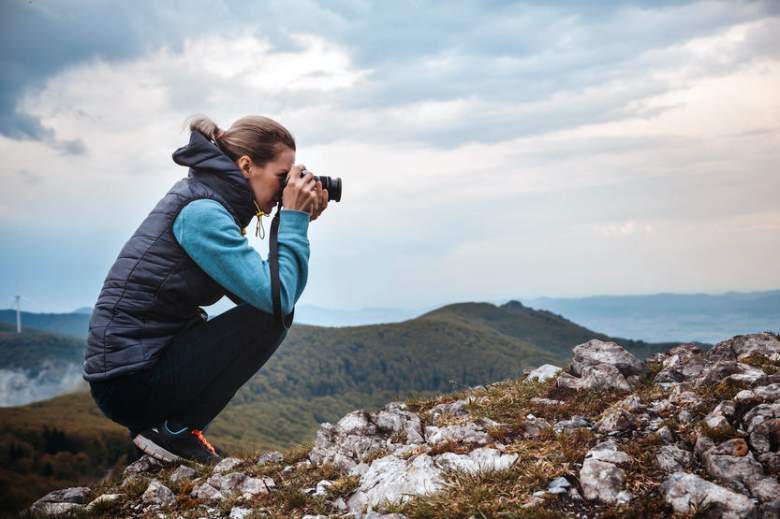
If you’ve been bitten by a love for photography, you’ll rapidly outgrow the camera built into your smartphone — as soon as you try to use a slow shutter speed to capture water lapping up on a beach or take a sharp close-up of the Moon’s craters, you’ll encounter the limits of what a phone can do. That’s when it’s time to make the transition to a DLSR — a Digital Single Lens Reflex camera — where you can really explore the world of photography and learn how to get creative. But whether you are more interested in a Nikon camera, a Canon, or some other brand, there are a lot of DLSRs out there, and you should make a smart purchase. The best DSLRs for beginners won’t cost you a fortune, will offer all the automatic features you need to hit the ground running, and yet will have enough features to give you the room to grow, learn, and expand your skills at your own pace.
To be completely fair, you don’t need a DSLR. To some degree, a camera is a camera is a camera, and you can take great photos with any camera: a point and shoot, mirrorless, DSLR, or yes, even a smartphone. But a DSLR is the best choice for most people. Unlike a smartphone and point & shoot, it lets you change lenses to suit the needs of the picture you are trying to take. And while mirrorless cameras are, like DSLRs, also interchangeable lens cameras, DSLRs have a few advantages, at least for now. DSLRs offer you a true optical viewfinder and a much longer battery life. DSLRs also have a bigger selection of lenses. Building a collection of lenses for a mirrorless camera can get expensive feel limiting.
I’ve rounded up 9 of the very best digital SLRs for sale today. These cameras are at the intersection of good prices, features, and ease of use. Any of these models will serve you well. And if you want to dig deeper into how to smartly buy the right DSLR, scroll to the end of the article for some buying advice that you can apply regardless of what camera you’re interested in.
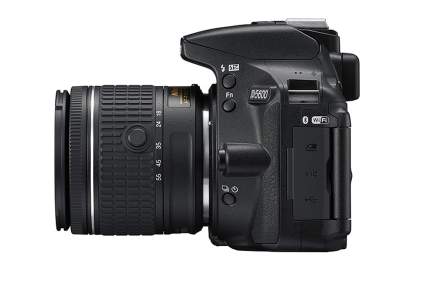
|
Amazon Customer Reviews
|
Price: $1,299.00 Shop at Amazon | Shop now Read our review |
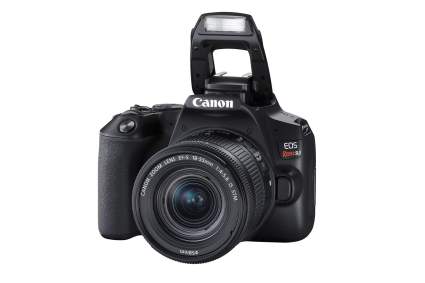
|
Amazon Customer Reviews
|
Price: $749.00 Shop at Amazon | Shop now Read our review |
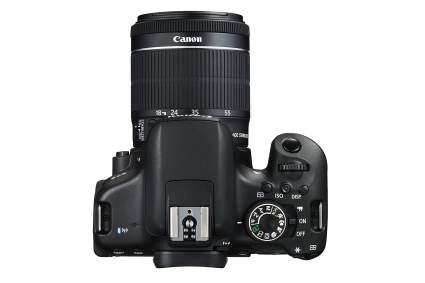
|
Amazon Customer Reviews
|
Price: $799.00 Shop at Amazon | Shop now Read our review |
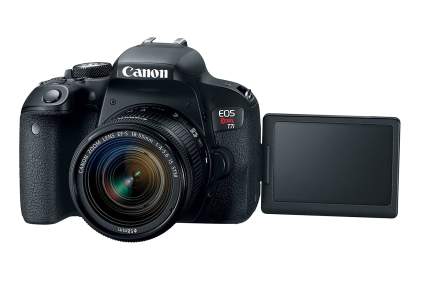
|
Amazon Customer Reviews
|
Price: $899.00 Shop at Amazon | Shop now Read our review |
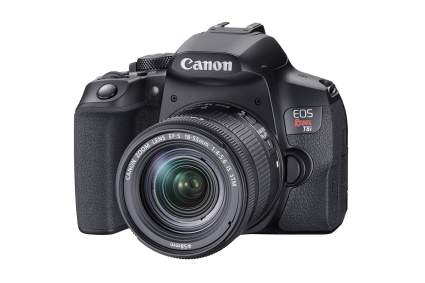
|
Amazon Customer Reviews
|
Price: $979.95 Shop at Amazon | Shop now Read our review |
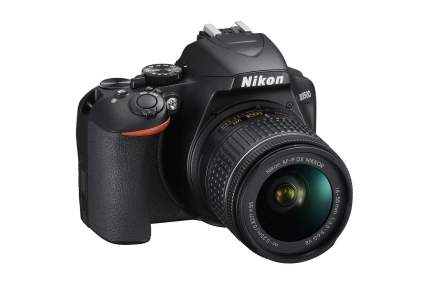
|
Amazon Customer Reviews
|
Price: $1,199.00 Shop at Amazon | Shop now Read our review |
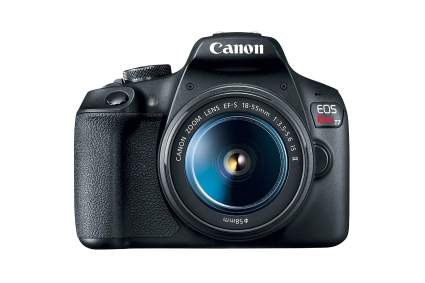
|
Amazon Customer Reviews
|
Price: $599.00 Shop at Amazon | Shop now Read our review |
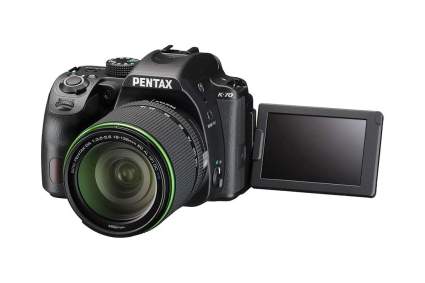
|
Amazon Customer Reviews
|
Price: $646.95 Shop at Amazon | Shop now Read our review |
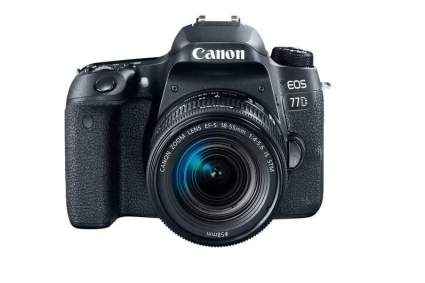
|
Amazon Customer Reviews
|
Price: $1,529.00 Shop at Amazon | Shop now Read our review |
-
1. Nikon D5600
Pros:- Excellent 24MP images
- Large articulating touchscreen viewer
- SnapBridge wireless for transferring to your phone
Cons:- No 4K video
- Camera isn't rugged
- No integrated GPS
Sensor size: APS-C | Viewscreen: 3.2-inch (articulating) | Shooting speed: 5fps | Resolution: 24 megapixels | Video resolution: 1080p | Weight: 16 ounces
The Nikon D5600 is a very modern take on the traditional DSLR — to the traditional features you’d expect to find in any SLR, Nikon adds stuff like full wireless connectivity (Wi-Fi and Bluetooth) and a touch articulated viewscreen that you can use to get shots from almost any angle, including monitoring the camera from in front of the lens. And you really don’t lose anything in the trade; the camera brings 24 megapixels of resolution to the table, along with a fairly standard APS-C image sensor. If there’s one regret with the D5600, it’s that the camera only shoots HD 1080p video rather than 4K.
The camera captures excellent images with great detail and low noise across most of the camera’s ISO settings, which is an important consideration for any DSLR. The very straightforward controls include a simple control dial that lets you choose Manual, Aperture priority, Shutter priority, and Program mode, as well as a host of smart scene modes. What really makes the D5600 a joy to use, though, is the touchscreen, which lets you tap to make selections (like scene modes and effects) as well as to zero in on focus zones rather than using a traditional wheel or arrow keys to hunt for where you want to focus.
Nikon includes both Wi-Fi and Bluetooth, and the SnapBridge software makes it easy to wirelessly transfer photos and video from the camera to your phone or other devices.
The camera is also surprisingly lightweight, though that’s due in large part to the fact that it’s not super rugged. If you plan to regularly take the camera into challenging outdoor environments, this might not be the best choice — but you’ll definitely appreciate how little it weighs.
-
2. Canon EOS Rebel SL3
Pros:- Good 24 megapixel images
- 4K video
- Very lightweight
Cons:- Not especially rugged
- Autofocus system is dated
- No external mic input
Sensor size: APS-C | Viewscreen: 3-inch (Articulating) | Shooting speed: 5fps | Resolution: 24 megapixels | Video resolution: 4K | Weight: 16 ounces
Canon might claim that the Canon EOS Rebel SL3 is the world’s lightest DSLR with an articulating viewscreen, but it actually only ties models like the Nikon D5600. That’s not a harsh criticism;m this is still a very lightweight camera that’s genuinely comfortable to hold for extended periods of time. The trade-off is that it’s not especially rugged, so think twice before buying this camera to take anywhere it’s going to get caked in dirt or subjected to weather.
As you would expect for an entry-level DSLR, the SL3 emphasizes fully programmed point-and-shoot simplicity, but it also has easy-to-access Shutter priority, Aperture priority, Manual mode, and scene selections. The autofocus includes eye detection, which improves your chances of nailing the focus when taking people photos. And the 3-inch touch viewscreen fully articulates, so you can use it to frame your shots from any angle, including while positioned in front of the camera.
The camera has Wi-Fi and Bluetooth built in, which makes it easy to control the camera from your smartphone as well as transfer images from the camera to your phone for fast and easy sharing.
If you’re on the fence trying to choose between this model and a camera like the Nikon D5600, keep in mind that this model shoots 4K video — how important that is to you depends on how much video shooting you do — but includes on an aging 9-point autofocus system, which is easily bested by most of the competition.
-
3. Canon EOS Rebel T6i
Pros:- Excellent 24 megapixel sensor
- 19-point autofocus
- Articulating touchscreen
Cons:- No 4K video capture
- No continuous focusing in live view
- Weak battery life
Sensor size: APS-C | Viewscreen: 3-inch (Articulating) | Shooting speed: 5fps | Resolution: 24 megapixels | Video resolution: 1080p | Weight: 19.6 ounces
The Canon EOS Rebel T6i has been around a few years now — it debuted in 2015 — but guess what? DSLRs don’t really become “obsolete,” and the T6i is still a much sought-after camera that performs superbly at a good price. It includes a modern 24-megapixel APS-C sensor and includes phase-detection autofocus tech that works fast and authoritatively with a 19-point autofocus system. Like many other similar models, it can capture up to 5 frames per second in continuous shooting, and it can be dialed up to an ISO of 12,800 for very low-light photography.
Given its age, you probably shouldn’t be too surprised that it doesn’t capture 4K video, but the 1080p HD video that it does record is quite good.
The T6i includes Wi-Fi with NFC, which you can use with compatible Android phones to pair and connect by gently tapping the phone against the camera body — very slick. Once paired, you can control the camera using a mobile app on your phone, and you can transfer and share photos wirelessly.
One of the camera’s best usability features is the fully articulating 3-inch touchscreen viewer, which makes it easy to capture photos from pretty much any angle or position. Unfortunately, the camera can’t focus continuously on a moving subject while you’re using the live view on the LCD display, so this camera isn’t ideal for action photography.
-
4. Canon EOS Rebel T7i
Pros:- Great 24 megapixel images
- Much-improved 45-point autofocus
- 6 fps burst mode shooting
Cons:- No 4K video
- A little bulky and heavy
- Low-light performance is not as good as similar models
Sensor size: APS-C | Viewscreen: 3-inch (Articulating) | Shooting speed: 6fps | Resolution: 24 megapixels | Video resolution: 1080p | Weight: 18.8 ounces
Canon has been carefully evolving its Rebel family for years, and the Canon EOS Rebel T7i is 2017’s update to the T6i, also found in this list. Again, it’s not the newest camera on the list, but is still such an exceptional performer that it needs to be considered by beginners looking for a superb DSLR that can carry them from just getting started to becoming comfortable as an intermediate enthusiast. It has al;l the essential specs — a solid 24-megapixel sensor, 45-point autofocus system, 6 frames per second shooting rate (about 20% faster than the T6i, in fact), and more.
One welcome update you’ll find in this camera is a friendly interface designed to help newbies make the transition from a point & shoot toa DSLR. All the power is still there, though, and you can even disable the friendlier interface entirely for access to the Rebel’s traditional UI. Another welcome change: Canon has adopted Dual Pixel AF system that can competently autofocus even moving subjects while using the live view on the 3-inch LCD display. Speaking of the display, it continues to be fully articulated, so you can maneuver it around to get the perfect shot from unusual angles, or see what you’re doing if filming from in front of the lens.
of course, the camera includes wireless connectivity for controlling the cameras from your Android or iPhone, and you can use the included Wi-Fi to transfer and share photos with your phone as well, so there’s no need to wait till you get home to transfer photos to your PC. The T7i still lacks 4K video though, so if you’re serious about filming with a DSLR, best to look elsewhere. There is a mic input, though, if you want to wire up an external microphone.
-
5. Canon EOS Rebel T8i
Pros:- Excellent 24 megapixel images
- High speed 7.5 fps shooting
- Fast autofocus
Cons:- Pentamirror design is showing its age
- 4K video is cropped
- 4K video focuses slowly
Sensor size: APS-C | Viewscreen: 3 inch (articulating) | Shooting speed: 7.5fps | Resolution: 24 megapixels | Video resolution: 4K | Weight: 18.2 ounces
The latest member of the Rebel family is the Canon EOS Rebel T8i, and this brand-new camera reflects everything Canon has learned about making a great entry-level-to-intermediate DSLR over the last decade or so. It’s a wonderful camera that is fully modern, easy to use, and flexible enough to keep up with you as your knowledge and skills grow. But like its predecessors, it’s still not the ideal choice for videophiles — despite the presence of 4K recording.
Most of the things that have been said about the T7i, also reviewed in this list, apply here. It has the same 24-megapixel sensor and 45-point autofocus system, for example. You now have a slightly improved control scheme, though. The four-way d-pad, which was always a bit of a bother, has been replaced with a control dial — and that’s a marked improvement. You still get the same friendly interface on the rear screen, which is a good way for beginners to learn the ropes. And that display is articulated, so you can shoot from varying positions.
Unfortunately, the optical viewfinder is a little dark. It’s a problem its predecessors have had for years, but I was hoping it would finally be addressed in the T8i. Unfortunately not, though. It’s a consequence of the fact that the camera family has always relied on a pentamirror rather than a pentaprism, and Canon seems intent on sticking with it.
The camera’s continuous shooting speed has been tweaked a bit — now it can blast through up to about 7.5 fps, which is an impressive frame rate for an entry-level DSLR. The camera shoots 4K video now as well, which is a welcome improvement, except that it only records 4K at 24fps — not 30 — and the video is cropped. Moreover, you lose the dual-phase fast focusing in 4K, so focusing is much slower. Again, this might not be the best choice for anyone wanting to use their new DSLR primarily for video.
-
6. Nikon D3500
Pros:- Super long battery life
- Excellent image quality
- Great interface for beginners
Cons:- No 4K video
- LCD doesn't move and isn't touchscreen
- No Wi-fi
Sensor size: APS-C | Viewscreen: 3-inch | Shooting speed: 5fps | Resolution: 24 megapixels | Video resolution: 1080p | Weight: 14.6 ounces
Nikon’s D3500 is one of the best overall values in DSLRs for beginners you will find anywhere. There’s a lot to admire here: superb image quality, a small lightweight body — one of the best you can find without going mirrorless — and an excellent interface that’s got plenty of user-friendliness for beginners without sacrificing power for more advanced shooters. It even has Bluetooth for transferring images to your phone.
The camera makes some sacrifices to meet its price point, though. For starters, it doesn’t shoot 4K video, which may or may not be a show-stopper for you, depending upon whether you plan to shoot video. More disappointing is the 3-inch LCD viewscreen, which is neither touch-enabled nor articulated. Compared to a lot of similar DSLRs, it feels like a relic from an earlier age.
Nonetheless, you get great battery life. You can shoot about 1500 photos on a single charge, which is hard to beat among any DSLR (and certainly any mirrorless camera). It keeps up with many of its peers with a burst mode of 5fps, and the whole camera feels super fast and responsive whether you’re switching modes, taking a shot, or using the autofocus — in part because the camera is so power-efficient, you literally never need to turn it off. Leave it on all the time, and it’s ready to shoot instantly. If anything is sluggish, it’s focused in the Live view mode, which isn’t particularly responsive. Like some other cameras on this list, it relies on the less premium pentamirror mechanism rather than a true pentaprism, but it’s not much of a compromise.
-
7. Canon EOS Rebel T7
Pros:- Inexpensive
- 24-megapixel sensor
- Good beginner-friendly controls
Cons:- No touchscreen or articulating LCD in back
- Video is only 1080p and requires manual focus
- Very slow 3fps max shooting rate
Sensor size: APS-C | Viewscreen: 3-inch | Shooting speed: 3fps | Resolution: 24 megapixels | Video resolution: 1080p | Weight: 16.8 ounces
What’s awesome about the Canon EOS Rebel T7? First and foremost, the price. This is not a bad camera by any stretch of the imagination, but it is starting to feel a little old despite, you know, not being all that old. That’s because it has a few features that really stand out as being a bit dated. But that might be fine when you see the pricetag — this is one of the cheapest DSLRs you can buy.
First, the good stuff: The camera is built around a 24-megapixel sensor and the on-screen shooting guide is friendly enough to help beginners learn how to take great photos with very little effort. It also has Wi-Fi and NFC for transferring photos wirelessly. And there’s that great price.
It’s hard to love the fact that this camera’s maximum shooting speed is a mere 3fps, though — every other camera on this list can muster at least 5fps, and at least one can get close to 8fps. If you are interested in action or sports photography, or even like to shotgun photos of your kids as they romp around, look elsewhere. Likewise, this camera still maxes out at 1080p for video, though the lack of 4K is a semi-common criticism for cameras in this price range. When you put the camera to work, you’ll find the 9-point autofocus system serviceable, but it’s a bit sluggish to achieve focus lock, and Live view mode is even slower. Worse, focus locks before you start recording. If you need to change focus during the video, you’ll need to do it manually.
-
8. Pentax K-70
Pros:- Fast 6fps continuous shooting
- Weather and dust sealed
- Fast focusing for video shooting
Cons:- Camera is pretty heavy
- No 4K video
- No touchscreen
Sensor size: APS-C | Viewscreen: 3-inch (articulated) | Shooting speed: 6fps | Resolution: 24 megapixels | Video resolution: 1080p | Weight: 24.3 ounces
The Pentax brand is less common than Nikon or Canon, though certainly not unheard of, but Pentax manages to make impressive DSLRs that compete quite well with the more popular models. Take the Pentax K-70, for example: This camera would make almost any new or intermediate photographer quite happy. That’s because Pentax punches above its weight with the K-70, incorporating great features that are less common in this price range. The body is fully dustproof and weather-sealed, for example, making it solidly rugged in a way few other $500 DSLRs can manage. It also has a real pentaprism rather than the less impressive pentamirror, which gives you a brighter image in the viewfinder.
All that comes at a cost, though: The K-70 weighs over 24 ounces — the most of any camera in this roundup. How big of a deal that is actually depends on you, but the camera is definitely harder to hold up to your eye for extended period of time and can fatigue you during long days out with the camera.
This camera is easy to love though; you get an impressive 6fps continuous shooting speed, among the fastest of any cameras in this price range. There’s also a gorgeous 24-megapixel sensor with a speedy 11-point autofocus system. The LCD display fully articulates so you can position it anywhere you like, even flipped around for monitoring from in front of the lens. It’s not a touchscreen, though, and Pentax isn’t known for the most elegant control scheme (which Pentax owners sometimes consider a badge of honor). While not best-in-class, you get above-average autofocusing while in Live view mode thanks to excellent phase-shift focusing technology. If only video recording wasn’t limited to 1080p.
-
9. Canon EOS 77D
Pros:- Fast 6fps continuous shooting
- 45-point autofocus system
- Excellent Live view performance
Cons:- Non 4K video
- Body doesn't feel rugged enough
- Penamirror design
Sensor size: APS-C | Viewscreen: 3-inch | Shooting speed: 6fps | Resolution: 24 megapixels | Video resolution: 1080p | Weight: 19 ounces
The Canon EOS 77D doesn’t have a “Rebel” name, and that’s deliberate and quite telling: while by no means a high-end Canon DSLR, it’s a step up from the entry-level Rebels. If you want a little more in the way of capabilities than Canon’s many Rebel models offer, then the EOS 77D deserves your attention.
Nowhere is the EOS 77D’s higher-end specs more apparent than in its 45-point phase-detection autofocus system. That’s the most detection points of any camera in this list and puts it on similar footing to more costly and premium cameras. You get great autofocus performance both in the viewfinder and when using Live view, something few entry-level cameras manage to do well. The camera also has a fully articulated 3-inch LCD screen that’s touch-enabled, making this camera especially easy to navigate around.
Unfortunately, Canon didn’t opt to include 4K video in this model, so you’re limited to 1080p video (which may not be an issue for you if you’re intent mainly on still photography). Instead, you get an impressive 6fps of continuous shooting speed, very close to the top of the list for a camera in this price range. You also get Wi-Fi and Bluetooth connectivity which lets you remotely control the camera and transfer images to your phone.
Should you get a DSLR or a Mirrorless Camera?
If you've made it this far, I assume you are intent on a DSLR, but in case there's any doubt, let's break it down.
A DSLR -- Digital Single Lens Reflex camera -- has a long history as a camera preferred by pros and enthusiasts alike. It gets its name from the mechanism -- either a pentaprism or pentamirror -- that diverts light from the lens up through the optical viewfinder -- you're seeing the same image the sensor will eventually see when you press the shutter release. And when the shutter is repressed, a mirror mechanism flips out of the way and lets the sensor be exposed to the light through the lens.
That worked great for half a century, but mirrorless cameras are just what they sound like -- it's now possible to use an LCD display and electronic viewfinder to show exactly what the sensor sees without the need for any mechanical pentaprism to flip out of the way.
Even though I heartily recommend DSLRs, make no mistake: someday, mirrorless cameras will be good enough to replace DSLRs, and DSLRs will be as obsolete as the Kodal Instamatic. But for the time being, and for quite a few years to come, DSLRs are still a better buy:
- DSLRs offer dramatically better battery life than mirrorless cameras.
- Mirrorless cameras don't yet have as expansive of a lens selection as DSLRs, and there are lenses you simply can't get to solve photographic problems you might have.
- For the most part, mirrorless cameras aren't yet as rugged and durable as their DSLR cousins.
Which Should You Buy: Canon or Nikon?
This is the eternal Coke vs. Pepsi question of the camera world -- people have asked it for decades, and still ask it today. Browsing the top cameras in this roundup, you can see it's still very much a two-brand world, with the occasional Pentax thrown in.
The answer is pretty straightforward: there's little substantive difference between the two brands. Both make superb cameras, though each one has specific models that are especially intriguing for beginner, intermediate, and pro photographers.
In general, don't even look at the brand unless you already have some lenses with a Canon or Nikon mount. If you have Canon, stick with Canon. But if you don't, pick whichever specific camera appeals to you, such as the Canon EOS Revel SL3 because you want its 4K video capabilities. Or the Nikon D3500 because you like the fact that you can shoot 1500 photos without charging the battery.
What to Look for in a DSLR Camera as a Beginner
If this is your first DSLR -- or you're replacing an older, seemingly obsolete model and still don't feel the need to step up to a more expensive model -- here are the main things you should consider:
Resolution and sensor. They're pretty much all 24 megapixels these days; as long as you see that number on the box, don't even worry about this. The days of obsessing over the most megapixels are long over.
Video. Do you plan to shoot a lot of video? If so, it pays to get a camera with 4K and the ability to autofocus while recording. If video isn't a priority, just ignore the video stats entirely. If you only use video once in a while, you won't use it enough to care about nuances in how the camera shoots video.
Shooting modes. This is important. Make sure the camera lets you switch between a healthy selection of programmed exposure, automatic, scene selection, and full manual modes. This is a camera you want to grow into, and being able to shoot in Program mode for casual snapshots and go full-manual for nighttime experiments with light trails is essential.
Don't buy the bundle. Spend much time shopping for DSLRs (or any kind of camera) and you'll find that many retailers including Amazon sell a lot of bundles -- packages that include the body, one or two lenses, memory cards, filters, cleaning kit, and carrying bag. This is a huge waste of money. If possible, buy the body on its own or get a kit that includes the body and a lens or two. (In this article, I've linked to the body + lens kits whenever possible, as that's generally the best deal for beginning photographers.) Everything else is simply a waste -- you can buy all that stuff cheaper on its own, and most of it you'll never need or use anyway. And items like camera bags should be chosen because they suit your needs, not just because they're included in a deal.
The Best Value in a DLSR as a Beginner
As the cliche goes, now is a great time to be alive. Brands like Nikon and Canon are selling the finest cameras ever made, and you can take advantage of a large stockpile of interchangeable lenses that will help you take exactly the kinds of photos you want.
If money is an object and you're looking to get a DSLR for the lowest possible price, consider the Canon EOS Rebel T7, which clocks in at a very low price yet has the specs to take great photos -- but it lacks the features that most of its peers have.
The Canon EOS Rebel SL3 is a great camera for photographers who plan to really lean into video -- but if HD video recording is ok, I'd suggest the best all-around value in a beginner DSLR would be the Canon EOS Rebel 8Ti.
See Also:
11 Best Nikon Cameras Buyer’s Guide
9 Best Canon Cameras Buyer’s Guide